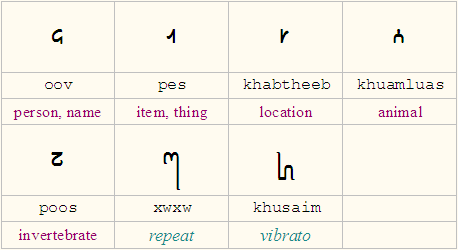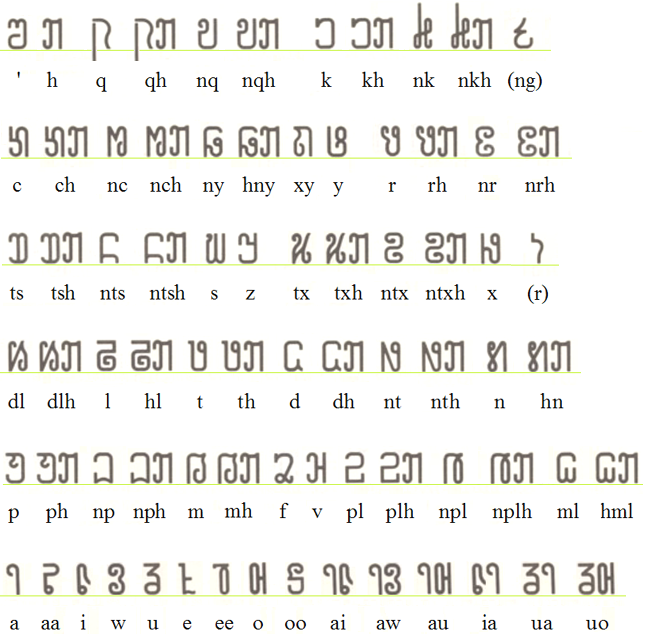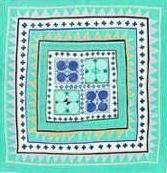This is an alternative system for writing the Hmong/Mong language, known as Ntawv Txawj Vaag (named after the inventor) or Ntawv Paj Ntaub, translating roughly as “flower-cloth writing system”. It was created by Reverend Cher Vang Kong (Txawj Vaag Koo) in the 1980s for use within his church. Some letters remind us of the earlier Flower Cloth Script, especially in the earlier font shown below.
This excellent script has been used by members of the United Christians Liberty Evangelical church in America for more than 25 years, in printed material and videos, so it’s a surprise and a pity that it’s not more widely known. Very special thanks to Suafeng Chervunkong of the UCLE church for information and font.
Consonants
Here and below, each glyph is shown with its RPA (Romanized Popular Alphabet) and IPA equivalents. Pre-nasalised consonants each have their own glyph. Aspirated consonants are not shown in this chart, but are regularly made by suffixing the /h/ letter; so for example RPA kh is written with /k/+/h/ and hm is written with /m/+/h/. The letters are arranged here by phonetic region, as in the Brahmic order. A few letters seem to be derived from Hebrew. This font is from 1993.
Vowels and Tones
Vowels follow their consonant in plain alphabetic manner, and tones are diacritics upon the vowel. Vowels may be used without a consonant, in ‘initial’ position. Diphthongs, and vowel sounds beyond those used in Hmong, may be written using various combinations of vowel letters. There are a couple of special vowel letters.
Tones are shown here sitting on a grey /a/. In the case of a diphthong, the tone-mark sits above the first vowel. It may also sit above an aspiration marker /h/, rather than the vowel(s) after it. Middle tone has no mark.
Other glyphs
Some extra symbols are available as shorthand classifiers. They are written at the end of some words to help differentiate homonyms. There is also a symbol to show repetition or reduplication, very similar to the Thai character Mai Yamok. The last symbol is used to show a vibrato effect, used with some words for extra meaning.
There is also a dedicated set of numerals.
Examples
1. An older font. This chart was prepared by Mattias Persson, by piecing together examples at the Hmong Language online encyclopedia. Comparing this to the modern font above shows how the script has matured over the years.
2. This short example is from an early primer.








